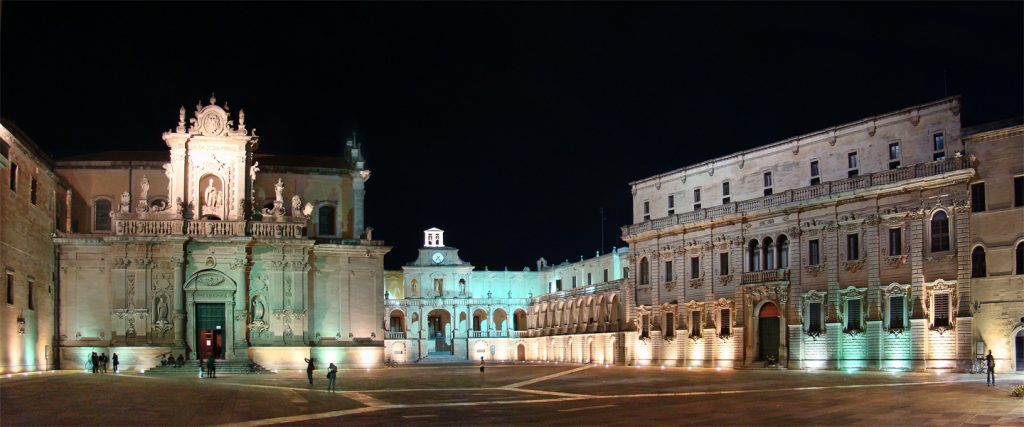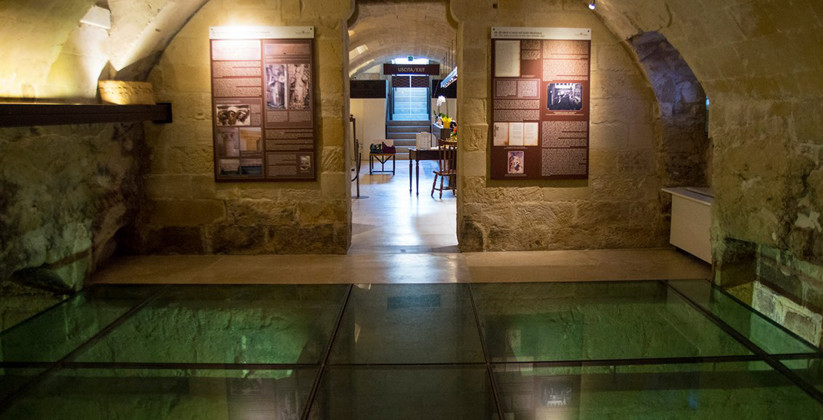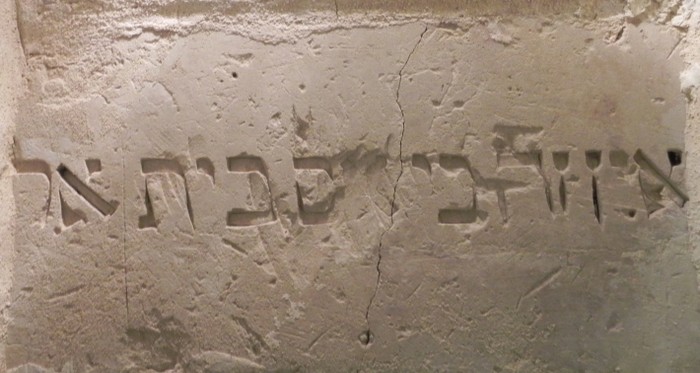
Lecce had one of the most prominent Jewish settlements in the Neapolitan kingdom before the expulsion of the Jews. Though there is no evidence of a Jewish presence prior to the 15th century, there are traces of its existence in Lecce at the time of the Normans (G. T. Tanzi, “Gli Statuti della Città di Lecce,” p. 19, Lecce, 1898).
Their occupations were mostly textile dyeing (silk and wool), cattle raising, and money lending. They were not allowed to own real estate or engage in the higher callings. They were also forced to wear distinguishing badges on their clothes. Still, the Jews were protected by the law and seem to have been free from persecutions. When the last Count of Lecce, Giannantonio del Balzo-Orsini, died in 1463 and the city came under the direct rule of Ferdinand the 1st, King of Aragon, there was an outbreak of violence against the Jews. During this time the ghetto was sacked, a number of Jews were killed, and the remainder were driven away.
In 2016, on the site of what once was the giudecca synagogue, opened the Palazzo Taurino – Jewish Medieval Museum of Lecce . The museum explores the everyday life of the Jewish community in Puglia between the ninth and fifteenth centuries. Some elements were excavated from the ghetto -such as a mezuzah or scriptures in Latin or Hebrew. You can as well visit the mikveh which was discovered under the building. As the museum is located in the center of the giudecca, it is a good starting point for your visit of the neighborhood. The streets names still bear traces of the medieval Jewish community. Via della Sinagoga, Via Abramo Balmes (in homage to the Jewish physician born in Lecce), Vico della Saponea (soap makers, principal activity of Jews in Lecce). The museum provides guided tours of the giudecca.
Sources: JItaly
Few people know it, but the Jewish Museum of Lecce is built in the area where the Jewish community was located in the Middle Ages. A look back at the ancient history of Lecce and a discussion of the museum’s plans and ambitions with Fabrizio Lelli, Associate Professor of Hebrew Language and Literature at the University of Salento

Jguideeurope : Can you tell us how the museum was created?
Fabrizio Lelli : The Jewish Museum of Lecce (hereafter the JM) was opened in May 2016. The project started from the initiative of private investors who aimed to cast light on a little-known piece of local history. Unlike most Italian cities, Lecce seems to have erased every trace of its Mediaeval past. In spite of the almost total absence of material testimonies, archives document the significant role played by Jews in Lecce over ten centuries, when the town was an important centre of economic and intellectual activities.
The Jewish community was among the most vital groups that populated Mediaeval Salento: a copious and strongly rooted presence since the beginnings of the Jewish Diaspora in Western Europe dating to Roman times. Throughout the Middle Ages, Jews played significant social roles – particularly from the 14th century onward, when they settled in the district where the museum is currently located.
The project is constantly growing, and, thanks to the help of those who believe in it, the museum has become a cultural centre that organises events and exhibitions addressing both locals and international visitors. We focus on Jewish identity and intercultural dialogue from the past to the present. School teachers and students are welcomed to attend seminars, in-depth workshops, temporary exhibitions and theatre performances.

Are there educational projects proposed by the museum and how is the city of Lecce participating in the sharing of Jewish culture?
Since its opening, the Jewish Museum has always offered to locals and non-locals a wide range of educational projects, including historical itineraries, guided tours, and workshops aimed at students of primary and secondary schools. Our activities, varying according to the age of the participants, aim to develop an engaging and stimulating approach to the knowledge of the Jewish history, traditions and culture of our territory. Most recently, the JM added to its educational offer the virtual reproduction of the ancient Jewish district of Lecce. By means of visual technologies, visitors can immerse themselves in medieval Lecce and take a virtual stroll in the ancient Jewish district.
Can you share a personal anecdote about an emotional encounter with a visitor or researcher during a previous event?
Working with visitors from around the globe offers us many emotional encounters, such as the many meetings with the descendants of the refugees that were welcomed in the DP Camps of Salento between 1945 and 1947. If I had to choose one, I would certainly mention the time when a local visitor shared with us a story about her grandmother. Even though she was Christian Catholic, she had the tradition of lighting a candle on Friday evenings, thus suggesting that in Lecce the traces of Jewish converts survive until nowadays. This is a demonstration of the important role played by our museum to revive the lost traces of a long-forgotten community.